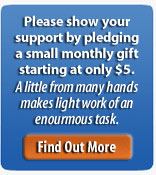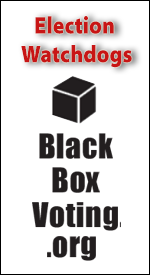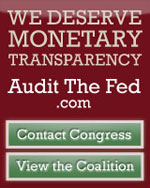The following audio is from a recent interview with Dr. Jerome Corsi and a second interview with William Murphy concerning the revelation that the central banks have been manipulating the gold market to keep the price of gold artificially low in order to keep the value of the dollar up as they've been simultaneously inflating the currency. The result is finally hitting the fan as the dollar value is rapidly plunging and the price of gold can no longer be held artificially low. This has all been done on purpose, to destroy the currency and consolidate real assets into the hands of the robber barons. There is no end to the lying, deceit and treachery of the world bankers.
This story exposes the primary reason why we have to put an end to corporate control of our Congress. The legal fiction of "corporate personhood" is primary reason the bankers were allowed to take over Congress, set up the Federal Reserve and through their control of our currency and extension of credit through the outright fraud of the "fractional reserve banking scheme" we have allowed them to amass most of the wealth and assets of the world for themselves.
U.S. central banks may have less than half the gold they claim to possess in their vaults, charges a watchdog group in an ad scheduled for publication in the Wall Street Journal this week.
As WND reported, the Gold Anti-Trust Action Committee, or GATA, claims the Federal Reserve and the U.S. Treasury are surreptitiously manipulating the country's gold reserves by participating in undisclosed leases, according to an advance copy WND obtained of the ad running in Thursday's edition of the Journal.
GATA believes much of the borrowed gold out on lease will never be returned to the central banks.
"With the demand for gold so strong worldwide, it has become impossible to return much of the leased gold without driving the price to the moon," said GATA's chairman, William J. Murphy III.
"Most observers calculate central bank reserves are supposed to have about 30,000 tons of gold worldwide in their vaults, but we believe the amount of gold actually there may be more like 15,000 tons," Murphy said. "The rest of the gold is gone."
The U.S. Treasury denies the claim, insisting the stock is accounted for regularly."We want to expose and stop the manipulation of the gold market by the United States Treasury and Federal Reserve right now," Murphy said.
"The purpose of this ad is to wake people up in the investment world as to what is going on behind the scenes in the U.S. gold and financial markets," Murphy told WND.
He explained GATA has decided to pay the Wall Street Journal $264,000 for a one-time placement of the full page ad in the national edition because the financial press has not covered the story.
"We have had two major international conferences since 2001; the mainstream financial press has blackballed our message," Murphy explained.
"Anybody Seen Our Gold?" the ad is titled, charging U.S. gold reserves held at depositories such as Fort Knox or West Point may have been seriously depleted as they are shipped overseas to settle complex transactions utilized by the Federal Reserve and the U.S. Treasury to suppress prices.
GATA further charges the U.S. government strategy to manipulate the price of gold has begun to fail.
"The objective of this manipulation is to conceal the mismanagement of the U.S. dollar so that it might retain its function as the world's reserve currency," the ad copy reads.
"Gold's recent rise toward $900 per ounce shows that the price suppression scheme is faltering," GATA says. "When it is widely understood how central banks have been suppressing gold, its price may rise to $3,000 or $5,000 an ounce or more."
As evidence of gold price manipulation by the U.S. Treasury and the Federal Reserve, GATA cites Treasury's weekly report of the government's international reserve position that since May has listed gold loans and swaps as a line item in accounting for U.S. gold reserves.
The ad also cites a July 24, 1998, statement by then-Federal Reserve Chairman Alan Greenspan, who told Congress "central banks stand ready to lease gold in increasing quantities should the price rise."
The most recent U.S. Treasury statement of the U.S. international reserve position, released Jan. 24, lists the total U.S. foreign currency reserves as $71.515 billion, of which $11.041 billion is listed as gold (including gold deposits and, if appropriate, gold swapped).
The Bank of International Settlements reports the gold derivatives market hit a peak of $640 billion dollars in December 2006.
Murphy emphasizes that tracing the derivatives back to central bank gold transactions and determining precisely the degree to which the Federal Reserve and the U.S. Treasury are involved is not possible now, given the lack of public accountability and transparency built into the gold derivatives financial system worldwide.
Murphy said his group filed a Freedom of Information Act request with the U.S. Treasury and the Federal Reserve "to find out what this line item is all about."
"What is the true status of the U.S. gold that is supposed to belong to the American people?" he asked. "Has U.S. gold been put into play without the Treasury or Fed letting the American people know?"
A statement on Treasury's website claims the agency's Exchange Stabilization Fund has not been used to manipulate gold prices. But no statement could be found on the Treasury website that categorically denies the agency engages in gold swaps, leases or futures contracts for reasons other than to manipulate the price of gold.
The London Bullion Market Association lists on its website more than 80 members working as "bullion bank market makers" engaged in the worldwide gold commodities market place as principals originating and participating in various gold derivative products, including gold leases and swaps.
The U.S. members of the London Bullion Market Association listed include Bear Stearns Forex Inc., Goldman Sachs International, JP Morgan Chase Bank, Bank of America, Citibank, Merrill Lynch and Morgan Stanley.
A legal memorandum filed Feb. 28, 2003, on behalf of Barrick Gold Corporation, a major gold company affiliated with bullion bank J. P. Morgan, admitted Barrick engages with central banks in gold leases and other gold derivative transactions, without specifically admitting whether any such transactions were conducted on behalf of the Federal Reserve and Treasury.
In September 1999, European central banks meeting in Washington signed what has become known as the "Washington Accord," an agreement in which the banks agreed to limit the amount of their gold sales to 400 tons per year and not to expand their leasing operations during the five years of the agreement.
Under a gold lease, a central bank loans gold to a bullion bank at a nominal rate of interest, typically 1 percent.
The bullion banks then takes the gold lease to a commodities market such as the London Bullion Market, where the physical gold is sold, thereby adding to the supply of gold available on the market.
Problems develop when the price of gold rises dramatically, such as it has in recently months, with gold currently running over $900 an ounce.
Now, when the leased gold needs to be returned to the central banks at the end of the lease period, the bullion banks may have to go into the market and buy gold at a much higher price than the price when the gold initially was leased.
To hedge against the risk, bullion banks typically buy futures contracts or gold call options to secure gold delivery at a specified future date for a specified future price.
In the world of gold derivatives, a wide variety of contracts exist, including transactions in which central banks swap gold reserves, so they can carry out leasing or other gold derivative transactions using the gold of the other central bank rather than their own.
Gold swaps make central bank gold transactions even less transparent and more difficult to track.
Under current International Monetary Fund rules, central banks do not have to disclose on their financial statements how much of the gold in their stated reserves is encumbered by derivative contracts, including gold leases and swaps.
Nor are bullion banks required to disclose to the public the contracts under which they lease gold from central banks.
Gold yesterday hit a new all-time high, with futures contracts for February delivery surging to $929.80 an ounce on the New York Mercantile Exchange in mid-day trading.

Click Photo to see full size ad and Reference Links















 This is the most comprehensive documentary ever produced about higher education in the U.S. NIA's hour-long documentary called 'College Conspiracy' exposes the facts and truth about America's college education system. 'College Conspiracy' was produced over a six-month period by NIA's team of expert Austrian economists with the help of thousands of NIA members who contributed their ideas and personal stories for the film. NIA believes the U.S. college education system is a scam that turns vulnerable young Americans into debt slaves for life.
This is the most comprehensive documentary ever produced about higher education in the U.S. NIA's hour-long documentary called 'College Conspiracy' exposes the facts and truth about America's college education system. 'College Conspiracy' was produced over a six-month period by NIA's team of expert Austrian economists with the help of thousands of NIA members who contributed their ideas and personal stories for the film. NIA believes the U.S. college education system is a scam that turns vulnerable young Americans into debt slaves for life.






